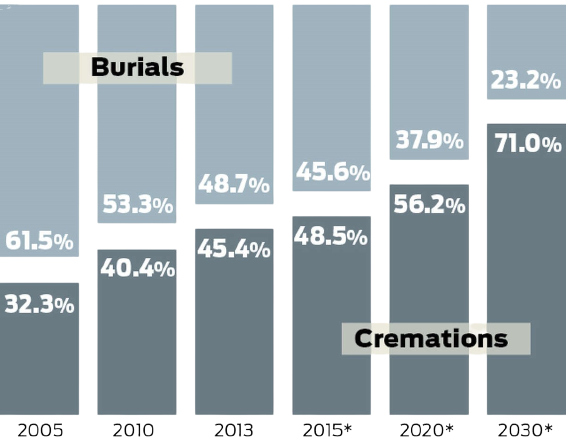What are the benefits of Cremation vs Burial?
This article explores the practices of traditional burial and the additional benefits of a modern alternative; human cremation. We discuss the historical origins, technological advancements in cremation, environmental implications, and financial opportunities that surround owning a cremator and crematorium.
Table of content:
A brief overview of traditional burial:
A short historical of traditional burial practices.
History of Human Cremation:
A concise history of human cremation and its development over time.
Advancements in Cremation Technology:
Highlighting technological innovations and advancements in the field of cremation.
Benefits of Cremation:
Presenting factual information about the benefits of choosing cremation as an option.
Effects on the Environment:
Explaining how cremation can be more environmentally friendly compared to traditional burial methods.
Return on Investment:
Discussing the financial aspects of owning a cremator and how it can be a viable business opportunity.
A Brief Overview of Traditional Burial
The practice of traditional burial has a rich and storied history that spans millennia. It is deeply ingrained in the cultural and religious traditions of various societies around the world. Understanding the historical context of traditional burial is essential in appreciating the modern alternatives that have emerged, such as human cremation.
- Ancient Origins: Traditional burial has its roots in ancient civilizations. For thousands of years, communities have honored their deceased through various burial customs. Ancient Egyptians, for instance, are famously known for their elaborate burial rituals, including mummification and the construction of grand tombs, like the pyramids.
- Religious Significance: Many religious beliefs and practices have historically centered around traditional burial. In Christianity, for instance, the idea of burying the deceased is linked to the belief in the resurrection of the body on Judgment Day. Similarly, in Islam, it is considered a religious duty to bury the deceased as soon as possible in a simple grave.
- Cultural Variations: Traditional burial practices vary widely from one culture to another. Some cultures practice cremation alongside burial, while others exclusively rely on burial. Each culture’s burial traditions carry unique customs, rituals, and beliefs associated with the treatment of the deceased.
- Environmental Impact: Over time, the prevalence of traditional burial has raised concerns about its environmental impact. Conventional casket materials, embalming chemicals, and the use of burial plots have been associated with deforestation, groundwater contamination, and land scarcity issues.
- Continuation Today: Traditional burial remains a common choice for many individuals and families. Despite the rise of alternative methods like cremation, it continues to be practiced in various forms, often in accordance with cultural and religious customs.
Understanding the historical significance of traditional burial provides a foundation for exploring alternative methods such as human cremation. While traditional burial continues to be a meaningful choice for many, it’s important to explore other options in the context of changing cultural, environmental, and personal preferences.
In the following sections of this article, we will delve into the history and benefits of human cremation, advancements in cremation technology, and the positive environmental aspects associated with cremation. Additionally, we will explore the potential financial opportunities that owning a cremator can offer, providing a comprehensive overview of the topic.
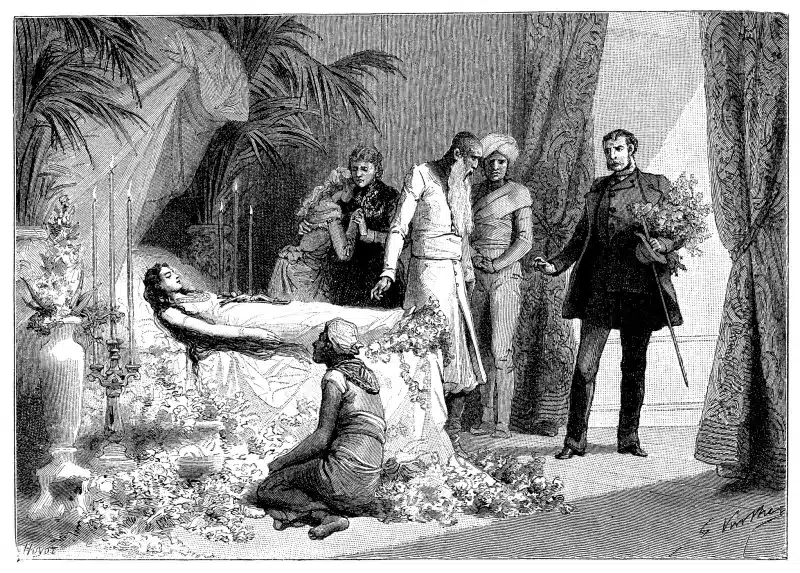
Coffins were not used by early settlers. The first coffins came in the later 1800s and were often carved-out hollow tree sections.
The History of Human Cremation
Human cremation, as an alternative to traditional burial, has a history that dates back thousands of years. While not as ancient as traditional burial, cremation has its own unique evolution and cultural significance.
- Ancient Beginnings: The practice of cremation can be traced back to ancient civilizations such as the Greeks and Romans. In ancient Greece, cremation was a common method of handling the deceased, particularly in regions like Athens. It was considered a way to purify the body by fire.
- Cultural and Religious Diversity: Like traditional burial, human cremation has been influenced by cultural and religious beliefs. Hinduism, for example, has a long-standing tradition of cremation as a means of releasing the soul from the physical body and facilitating its journey to the afterlife. Similarly, Buddhism often incorporates cremation as part of its funeral rites.
- Modern Resurgence: Cremation experienced a resurgence in the 19th and 20th centuries, particularly in Western cultures. Factors such as urbanization, changing attitudes toward death, and a desire for more practical and cost-effective funeral options contributed to this resurgence.
- Environmental Considerations: Human cremation is often seen as a more environmentally friendly alternative to traditional burial. It requires less land, avoids the use of embalming chemicals, and reduces the overall carbon footprint associated with funerals.
- Acceptance and Prevalence: In recent decades, the acceptance of human cremation has continued to grow. Today, it is a widely accepted and practiced method of handling the deceased in many parts of the world.
- Customization and Memorialization: Cremation offers flexibility in how families can memorialize their loved ones. Ashes can be kept in urns, scattered in meaningful locations, or used in various creative ways to honor the deceased.
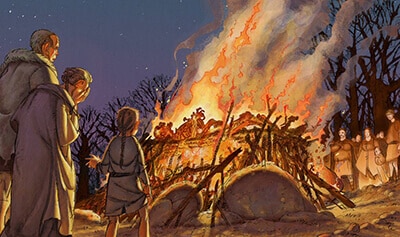
The history of human cremation is a testament to the evolving attitudes and preferences surrounding end-of-life practices. It provides insight into the cultural, religious, and environmental factors that have contributed to the acceptance and prevalence of cremation as a respectful and meaningful way to handle the deceased.
Image: Ancient Open Air Cremation
In the subsequent sections of this article, we will explore the advancements in cremation technology, the numerous benefits of choosing cremation, and the positive environmental impact it can have. Additionally, we will discuss the financial aspects of owning a cremator and the opportunities it presents as a business venture.
Advancements in Cremation Technology
The practice of human cremation has evolved significantly over the years, driven by advancements in technology and a growing demand for more efficient and environmentally friendly methods. These advancements have transformed the cremation process into a highly sophisticated and well-regulated industry.
-
Modern Cremation Equipment: Today’s cremation equipment is designed to be safe, efficient, and environmentally responsible. Macrotec cremators are equipped with advanced features such as emissions control systems to minimize air pollution, automatic temperature and timer controls for precise cremation, and advanced monitoring and safety mechanisms.
-
Energy Efficiency: Advances in cremation technology have led to more energy-efficient operations. Macrotec cremators are designed to reduce energy consumption while maintaining the highest standards of performance. This not only benefits the environment but also makes cremation a cost-effective choice.
-
Emissions Control: Environmental concerns have driven the development of advanced emissions control systems in cremation equipment. These systems help capture and neutralize harmful emissions, such as mercury from dental fillings, ensuring that the cremation process has minimal impact on air quality.
-
Respectful Handling: Cremation technology has also improved the process of handling and identification of remains. Strict protocols are in place to ensure that each cremation is performed with the utmost care and respect for the deceased.
-
Customization Options: Some modern cremation facilities offer customization options for families. This may include the ability to witness the cremation process or to personalize the cremation service with music, readings, or other meaningful elements.
-
Regulatory Standards: The cremation industry is subject to rigorous regulatory standards and oversight to ensure that ethical and environmentally responsible practices are followed. These standards help maintain the integrity of the cremation process.
Advancements in cremation technology have not only enhanced the efficiency and environmental responsibility of the process but have also contributed to the acceptance of cremation as a viable and respectful option for handling the deceased. These technological innovations align with the evolving preferences of individuals and families seeking more sustainable and personalized end-of-life choices.
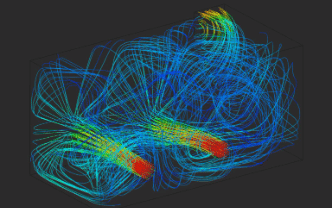
CFD Simulation
In the upcoming sections of this blog post, we will delve into the various benefits of choosing cremation, the positive environmental impact of cremation compared to traditional burial, and the potential financial opportunities for those interested in owning a crematorium as a business venture.
The Benefits of Cremation
Choosing cremation as an end-of-life option offers several significant benefits, making it a preferred choice for many individuals and families. These benefits encompass various aspects, from flexibility in memorialization to cost savings and more.
- Cost-Effective: Cremation is often a more cost-effective option than traditional burial. There are fewer expenses associated with caskets, burial plots, and maintenance, making it a practical choice for those with budget considerations.
- Flexibility in Timing: Cremation offers the flexibility to schedule memorial services at a convenient time for the family. This can be particularly beneficial for accommodating the schedules of distant relatives or for planning a meaningful ceremony.
- Ease of Transportation: Cremated remains are compact and portable, allowing for easy transportation if family members live in different locations or if the deceased’s final resting place is a significant distance away.
- Preservation of Memories: Some families find comfort in knowing that they can keep a portion of their loved one’s ashes as a keepsake. This tangible connection can help preserve cherished memories.
- Reduced Physical Footprint: Cremation reduces the physical footprint associated with traditional burials. This aligns with the preferences of individuals who are conscious of their environmental impact.
- Acceptance and Personalization: Cremation has gained widespread acceptance in many cultures and religions. Additionally, it allows for a highly personalized approach to memorialization, enabling families to create meaningful and unique tributes.
- Ease of Documentation: Cremation processes are well-documented, providing families with a clear record of the procedures and decisions made. This transparency can offer peace of mind during a difficult time.
The benefits of cremation extend beyond practical considerations and touch on the emotional and environmental aspects of end-of-life choices. As individuals and families seek more personalized and sustainable options, cremation continues to grow in popularity as a respectful and meaningful way to honor the departed.
In the subsequent sections of this article, we will explore the positive environmental impact of cremation compared to traditional burial, as well as the financial opportunities associated with owning a cremator and setting up a crematorium as a business.
Effects on the Environment
Cremation, as an end-of-life option, can have several positive effects on the environment when compared to traditional burial practices. These environmental benefits reflect a growing awareness of the need for more sustainable approaches to handling the deceased.
- Land Conservation: One of the most significant environmental benefits of cremation is its reduced demand for land. Traditional burials require large plots of land for cemeteries, contributing to urban sprawl and the conversion of natural landscapes. Cremation eliminates the need for expansive burial sites, conserving valuable land resources.
- Lower Carbon Footprint: Cremation can have a lower carbon footprint compared to traditional burial methods. Modern cremation equipment is designed to be energy-efficient, reducing greenhouse gas emissions associated with the process. Additionally, cremation avoids the use of heavy caskets and equipment, further reducing energy consumption.
- Minimal Use of Resources: Traditional burial involves the production of caskets, burial vaults, and embalming chemicals, all of which require natural resources and energy to manufacture. Cremation eliminates the need for these resource-intensive components, leading to resource conservation.
- Reduced Groundwater Contamination: Traditional burial practices can potentially lead to groundwater contamination, as embalming fluids and casket materials can leach harmful chemicals into the soil. Cremation avoids this risk, as it does not involve burial and the associated chemicals.
- Preservation of Natural Landscapes: The conservation of natural landscapes is a critical consideration for environmentalists. Cremation allows for the preservation of natural areas and ecosystems, as it reduces the expansion of cemeteries into undeveloped land.
- Emissions Control: Modern cremation equipment is equipped with advanced emissions control systems that capture and neutralize harmful emissions, including mercury from dental fillings. This helps maintain air quality and minimizes the release of pollutants.
- Sustainable Memorialization: Families can choose to scatter cremated remains in natural settings or create memorial gardens, contributing to the sustainable use and preservation of natural spaces.
- Alignment with Environmental Values: For individuals and families who prioritize environmental sustainability, cremation aligns with their values and allows them to make eco-conscious choices even in end-of-life decisions.
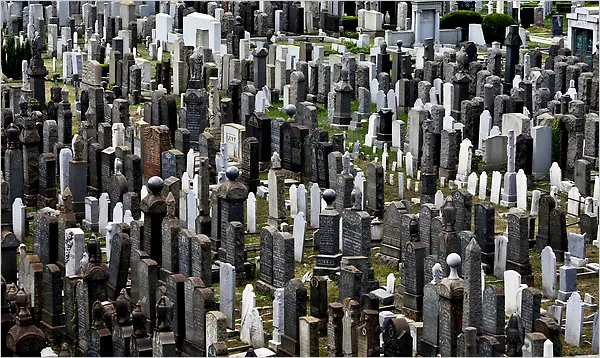
Washington Cemetery in Brooklyn, has no land left for new burial plots. Other cemeteries in the city are in similar straits.
The positive effects of cremation on the environment reflect a shift towards more sustainable and responsible end-of-life practices. As society becomes increasingly environmentally conscious, cremation offers a means to honor the deceased while minimizing the ecological impact of these ceremonies.
In the following sections of this article, we will explore the potential financial opportunities associated with owning a cremator and establishing a crematorium as a business venture.
The Financial Opportunities of Owning a Cremator and Crematorium
Owning a cremator and establishing a crematorium can offer a range of financial opportunities for individuals and entrepreneurs. This section explores the potential benefits of investing in the cremation industry as a business venture.
- Increasing Demand: The funeral industry, including cremation services, has historically demonstrated a consistent and increased demand. As the population ages, the need for end-of-life services remains constant, providing a stable customer base.
- Diverse Services: Crematoriums often offer a variety of services, including cremation, memorial ceremonies, and ash scattering. Diversifying your service offerings can generate additional revenue streams.
- Community Need: Crematoriums provide an essential service to local communities. Establishing a reputable and compassionate cremation business can make a positive impact on families during a difficult time, fostering trust and repeat business.
- Real Estate Investment: The establishment of a crematorium often involves real estate acquisition or development. Depending on the location and property value, real estate can appreciate over time, offering a potential return on investment.
- Partnerships and Collaborations: Building relationships with funeral homes, hospices, and other end-of-life service providers can lead to collaborative opportunities, referrals, and increased business.
- Customization and Premium Services: Offering customization options and premium services, such as personalized urns or memorial ceremonies, can command higher fees and boost revenue.
- Green and Eco-Friendly Trends: As eco-friendly practices gain popularity, promoting environmentally responsible cremation options can attract environmentally conscious clients willing to pay a premium for green services.
- Pre-Planning Services: Providing pre-need cremation planning services allows individuals to make arrangements in advance. This not only offers peace of mind to clients but can secure future business for your crematorium.
- Financial Viability: The funeral industry, including cremation services, has proven to be a financially viable business sector. Well-managed crematoriums can be profitable enterprises.
- Regulatory Compliance: Ensuring compliance with local and state regulations is essential. Properly licensed and certified crematoriums can build trust with clients and avoid legal issues.
Cremation has become the most popular end of life ritual around the world and is projected to keep growing in popularity.
Owning a cremator and establishing a crematorium is not only a potential business opportunity but also a chance to provide a valuable service to your community. It requires careful planning, investment, and dedication to maintaining high standards of service and ethical practices.
